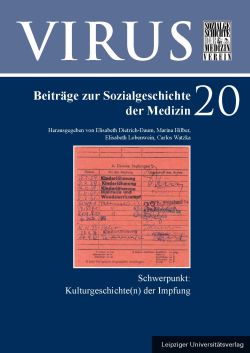
VIRUS Band 20, pp. 147-166, 2022/06/14
Schwerpunkt: Kulturgeschichte(n) der Impfung

This contribution uses a series of photographs from the “Königlich Bayerische Zentralimpfanstalt” (Royal Bavarian Central Vaccination Institute) in Munich, which is kept in the German Museum of Medical History in Ingolstadt, as sources of a visual history of smallpox vaccination. The approximately 40 black and white photographs were taken around 1914 and give a rare insight into a facility for the production of animal smallpox lymph. The vaccination institute manufactured the vaccine for the smallpox vaccination and distributed it to the vaccinators throughout the Kingdom of Bavaria. You can see all the rooms in the extensive building complex, from the waiting room and the vaccination room to the quarantine barn for the calves. The Munich institute wanted to use this series of photographs to advertise the new building erected in 1904, which was equipped according to the most modern hygienic standards of the time. Using the photographs, the article not only shows how the smallpox vaccine was bred, “harvested” and processed on the calves’ abdominal skin. It also develops the thesis that the photo series should promote the safety of the vaccine produced there and underline their leadership claim with regard to research on animal lymph.
Keywords: Smallpox Vaccination, Vaccine Production, Vaccination Technology, Royal Bavarian Central Vaccination Institution, Bavaria, Munich, Photo History, German Museum of Medical History Ingolstadt